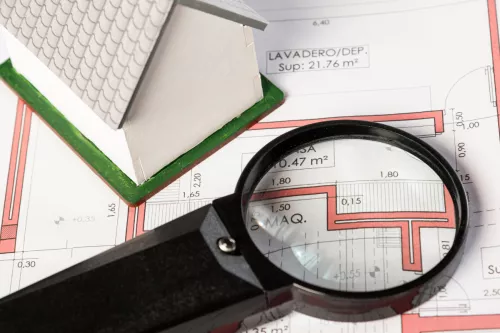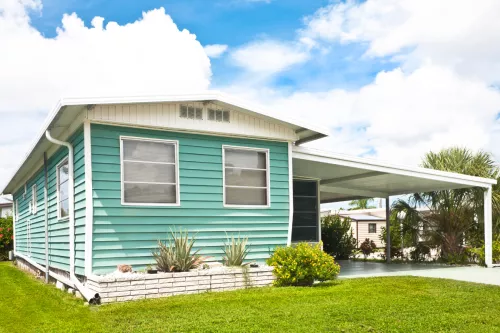Barn closet doors are gaining popularity over the years, and it's not hard to see why. Barn doors exude a classic, rustic appeal and are a simple solution for adding both distinction and separation to various rooms. They serve as an excellent alternative to conventional swinging closet doors or bi-folding closet doors.
Despite the need for sufficient wall space to allow the door to slide fully open, the benefits surpass the limitations. If you decide to change your regular closet door for a wooden sliding barn door, you will present numerous advantages. Besides their stunning appearance and contribution to the room's overall aesthetic, they also help in conserving valuable floor space.
If you are curious about the aspects of barn closet doors, and are looking for some practical advice on how you can incorporate this stylish element into your home, keep reading!
Are Barn Doors Good for Closets?
Sliding barn doors are ideal choices for closet doors as they glide along the wall, liberating potentially important floor space in your bedroom, which is otherwise needed for standard doors to swing open. Additionally, barn doors provide complete access to all sides of your closet, unlike other door types such as traditional sliding doors and standard swinging doors, which can sometimes obstruct access.
Benefits of Barn closet doors
Here we’ve listed some benefits of choosing barn closets door:
Space-Saving
Unlike traditional swing doors, barn doors slide parallel to the wall, saving precious floor space. They will require some wall space to operate effectively, but they don't occupy as much floor area as swinging doors do. This stylish and distinctive option is particularly advantageous in small apartments or homes where furniture is often placed close to doorways.
Rolling barn doors are an excellent substitute in situations where a standard door would open into a living area, limiting access to other parts of the home until it's fully closed. Barn doors, on the other hand, conveniently slide aside, facilitating effortless passage into and out of a room.
Aesthetic Appeal and Versatility
They add a distinctive, rustic touch to any room. Rolling barn doors are incredibly fashionable and can be tailored to suit any preferred design style. They gained popularity with the rise of the "shabby chic" trend in interior design, which blended rustic country decor with metal and wood elements.
With some creativity, it's clear that barn doors are versatile enough for various decor themes. Barn doors made of natural wood with metal highlights are perfect for urban, countryside, and nature-themed environments. Additionally, their sleek and uncomplicated design makes them a wonderful complement to minimalist modern homes.
Simple Installation Process
One of the advantages of barn doors is their simplicity in installation. Traditional doors require precise measurements before they are set up in doorways, and any error in measuring can lead to a door that doesn't close or open correctly.
When replacing a standard door, you might find yourself needing to change the entire door frame, which can turn into an expensive carpentry task that may exceed your budget. On the other hand, installing barn doors is quite straightforward. Plus, they offer the flexibility of easy replacement or alteration as part of your interior design updates or redecorations.
Disadvantages of Barn Style Doors

While barn doors have many benefits, there are a few drawbacks to consider:
Privacy and Noise
They are not sealed as tightly as conventional doors, potentially allowing for less sound insulation and privacy. If you have a barn style door in your bathroom for example, you will notice that barn doors aren’t great at sound dampening.
Installation Requirements
Requires stable wall space for the track and in some cases are not suitable for all wall types. Barn style doors require enough adjacent wall space to slide open. This can be a significant disadvantage in smaller rooms or areas with limited wall space, as it restricts the placement of furniture or other decor items.
Cost
Depending on the materials and design, they can be more expensive than standard doors. The cost of a barn door installation can range from $600 to $2,500.
Transforming a Closet Door into a Barn Door

Transforming a closet door into a barn door can be a rewarding DIY project that adds style and space efficiency to your home. Here's a comprehensive guide to help you through the process:
1. Step by step guide to transform your door
Gather Materials and Tools
You'll need a barn door hardware kit, which includes the track, rollers, and handles. Also, gather tools like a drill, level, saw, measuring tape, and screws and materials such as wooden boards, wood glue, and plywood.
Remove the current door
Begin by detaching your existing door from its frame by unscrewing the hinges. Also, take off the hinges from the door, along with any door knobs or other hardware. This door will then become the foundation for your new barn door.
Convert the Original Door to a Barn Door
Since barn doors are usually larger than standard doors, covering more of the door frame, you'll need to enlarge your existing door. Start by affixing 2x2 wooden boards around all edges of the door, securing them with wood glue and screws. Next, attach 1x2 boards to add extra width and height, using wood glue and brad nails, which also creates a neat and finished edge.
Designing the Door
Begin by identifying and marking the door's central line. Use a clamped board across this center line as a guide for placing the top herringbone strips. Start each strip with a 45-degree angle cut. Cut several strips and arrange them on the door, using weights to hold them down and dimes as spacers for even distribution.
Arranging the strips
When arranging the strips on the door, mark the points where they meet the opposite side of the door, then trim each strip to the correct length with another 45-degree cut. Continue this method until the entire top side is covered. For the bottom half, replicate the process but in reverse direction. Keep the top strips in position to align the bottom strips accurately with them. Next, mark the points where the bottom strips intersect with the door's edge and make your cuts accordingly.
Prepare and Paint the Wooden Strips
At this point, you're ready to paint a significant number of wooden strips. Start by priming them using either spray paint primer or a traditional brush-on primer. After the primer dries, apply two layers of your chosen paint color. If you plan to change the color of the door, paint the original door, both front and back, before affixing the wood strips.
Putting Together the Barn Door
With all the wooden strips painted, it's time to arrange them back in their initial order. Employ dimes as spacers and use 1-inch brad nails for fastening. Install shaker style trim (two lengthy strips along the length of the door's sides and three shorter strips to fit between these long side strips). After that, fill in any nail holes, seal the seams with caulk, and perform any necessary touch-up painting.
Install Hardware Barn Door Accessories
Follow the hardware kit’s instructions. The installation process is straightforward, and the kit contains all the necessary components.
2. Installing the Track
Begin by using a stud finder to identify the studs in your wall where the track will be mounted. If the wall studs do not align with the pre-drilled holes in the track, you have the option to first attach a mounting board to the wall.
This board should be either painted or stained to complement your wall or door. Then, using a level, proceed to mount the track either directly to the wall or onto the mounting board, making sure that it is properly aligned and level.
3. Preparing and Hanging the Door
Install Rollers: Attach the rollers to the top of the door according to the instructions in your hardware kit. After that, lift the door and place the rollers onto the track. Make sure it slides smoothly.
4. Safety and Adjustments
Check for Stability: Ensure that all components are securely attached and that the door doesn't wobble. Make any necessary adjustments to ensure the door slides smoothly and stays aligned.
5. Maintenance
Regularly check the hardware and tighten any loose components. Also, lubricate the track and rollers as needed for smooth functionality.
People also ask
Can I use any type of door for a barn door conversion?
Barn doors are generally larger in both height and width compared to standard doors, as they are designed to cover a portion of the door frame. To achieve this effect using your current door, you'll need to expand its dimensions. Begin by affixing 2x2 wooden planks around the entire perimeter of the door, securing them in place using wood glue and screws.
Do barn doors require special maintenance?
Regularly check and tighten the hardware. Dust the track and oil the rollers as needed. Maintaining your barn doors is crucial to keep them looking splendid for years to come. From the moment they were installed, they enhanced the charm of your home. To preserve this appeal, it's essential to clean them regularly, just as you would with any other piece of furniture in your house.
Are barn doors suitable for all interior styles?
Absolutely! Various decorative themes are compatible with barn doors, and the suitability largely hinges on the specific style of barn door you select. For those aiming to achieve a rustic aesthetic, like rustic chic, farmhouse, or log cabin decor, most barn doors offered by Rustic+Modern are likely to seamlessly integrate into such designs.

 Marcio Vasconcelos
Marcio Vasconcelos





